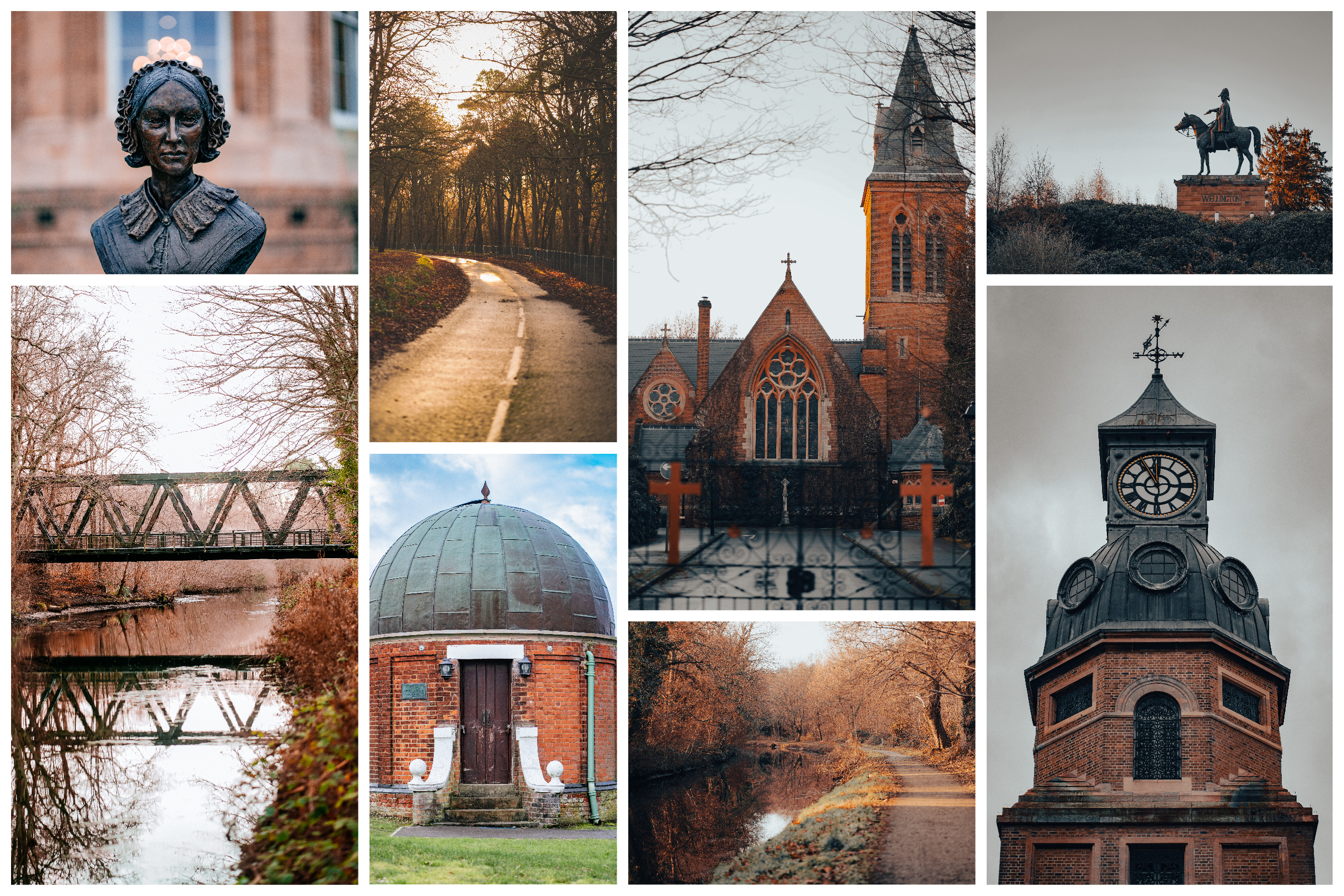D ate: January 19 2022
Location: Aldershot, Hampshire
Distance: 9.5 km
Today’s walk is a slightly different one than the previous three in that it’s partially within the town of Aldershot and that I was able to start and end right at the front door of our house! Seeing as I’m about to spend a short time in Canada, I wanted to spend a few hours going for a walk without any snow crunching beneath my feet. I figured that a nice walk would be a reverse walk of one of my usual running routes, around the military barracks of Aldershot.
We moved to Aldershot last year after finding a great little house in the former cavalry barracks of the military town of Aldershot in Hampshire. Truth be told, I’d heard a lot of not so great things about the town while living in nearby Guildford, but over the last year I’ve come to appreciate the close links to nature, the interesting military history and the rather colourful characters in the town.
One of my favourite running routes is one that takes me through the military training grounds, along WW1 shooting ranges, past monuments to war heroes and then down along the Basingstoke Canal, winding back upward along the main avenue linking the barracks and then back to the house. For this walk, I did it in reverse and added in a slight addition, where we’ll start, at the Cambridge Military Hospital.
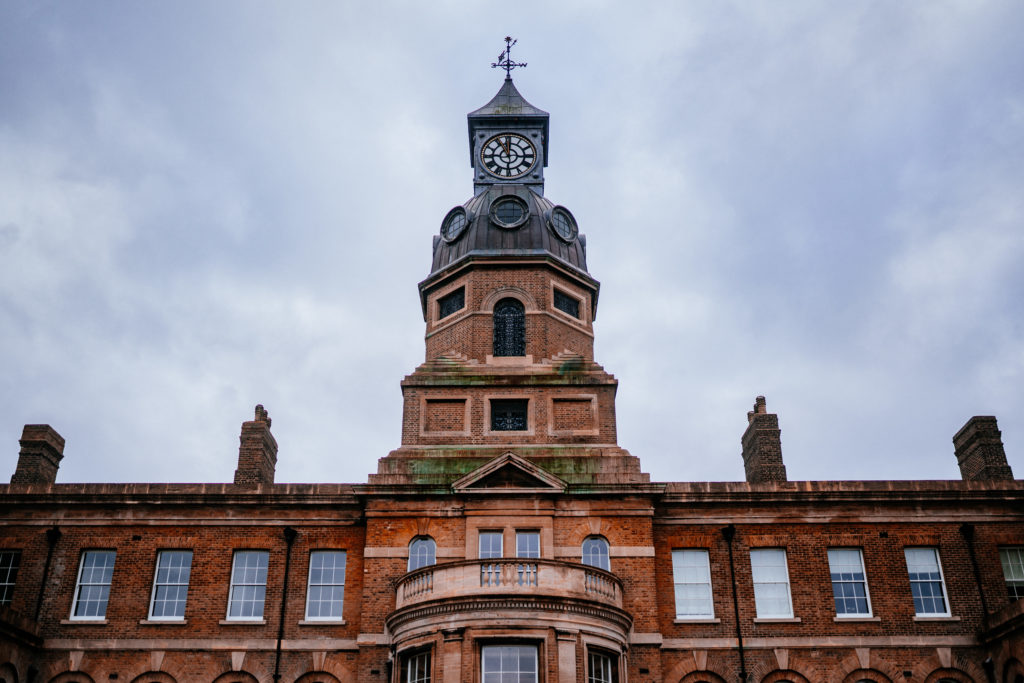
The hospital was built in 1879 to serve the military troops in the area, it was the first hospital to receive casualities from the Western Front in WW1 and was the first hospital in the British Empire to perform plastic surgery. Florence Nightingale, under the direction of Queen Victoria, had a large influence on how the hospital was designed and she apparently helped choose the location, on Gun Hill, as the open air and wind would help sweep away disease. There is a new sculpture in front to pay tribute to her efforts.
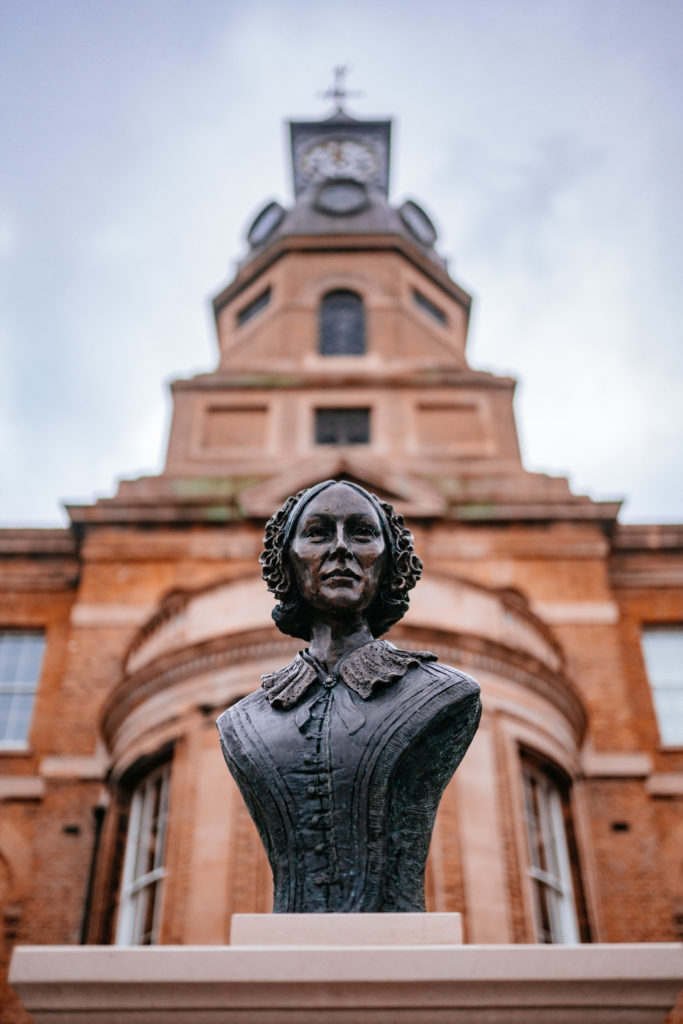
The hospital was abandoned for several years but has recently been renovated into luxury apartments (including an impressive penthouse that includes the belltower and clockface!). The bell inside the tower was stolen as a trophy during the Crimean war and it’s partner bell lives in the Tower of London.
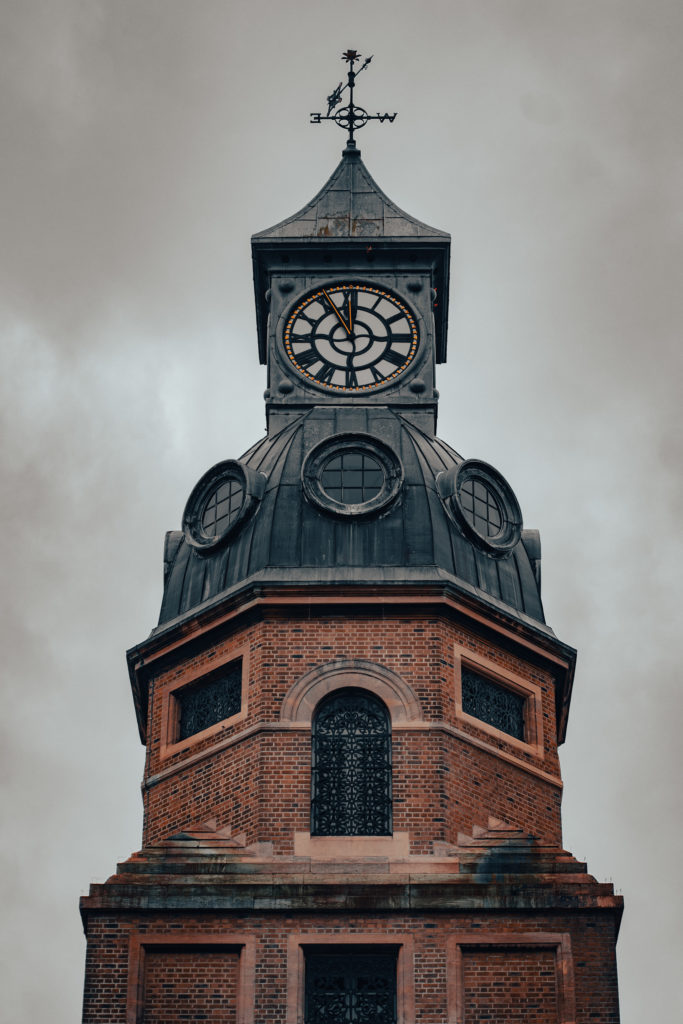
After walking away from the hospital area, I headed down Queens Avenue which links Aldershot Garrison with North Camp, both military barracks. One of my favourite little buildings is one that most people probably don’t even notice, it’s the Aldershot Observatory. Built in 1906 It’s rarely used now but for a century it was where local astronomers could search the night skies.
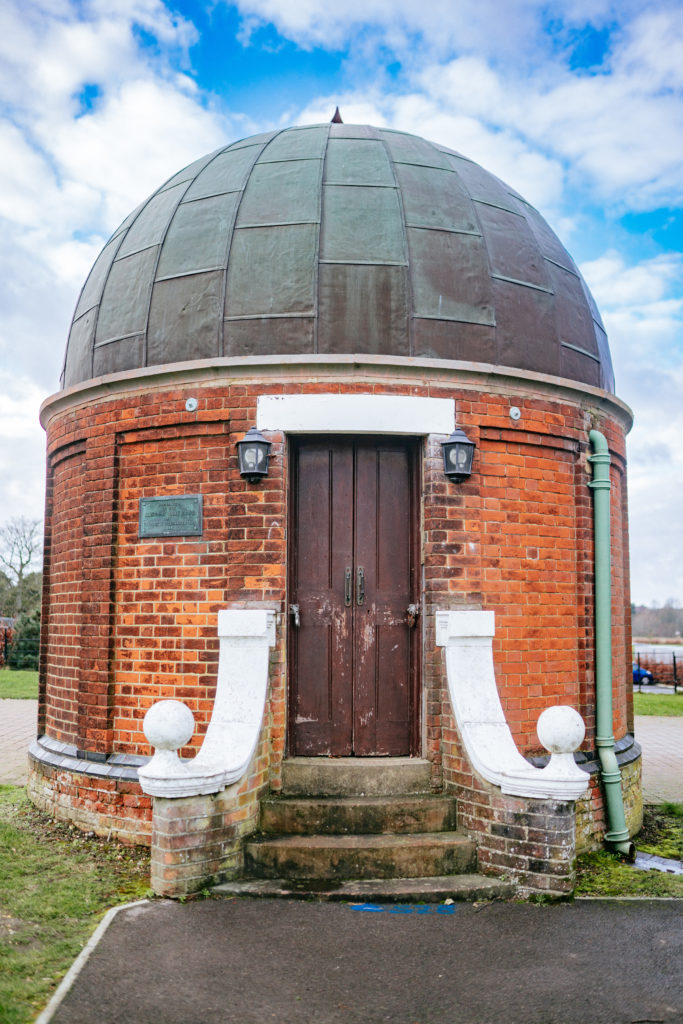
Across the road are two large churches, one is the Cathedral of St.Michael and St.George and the other is St.Andrews Garrison church. The Cathedral was built in 1892 and the corner stone was laid by Queen Victoria, the trowel and mallet lay inside the main doors.
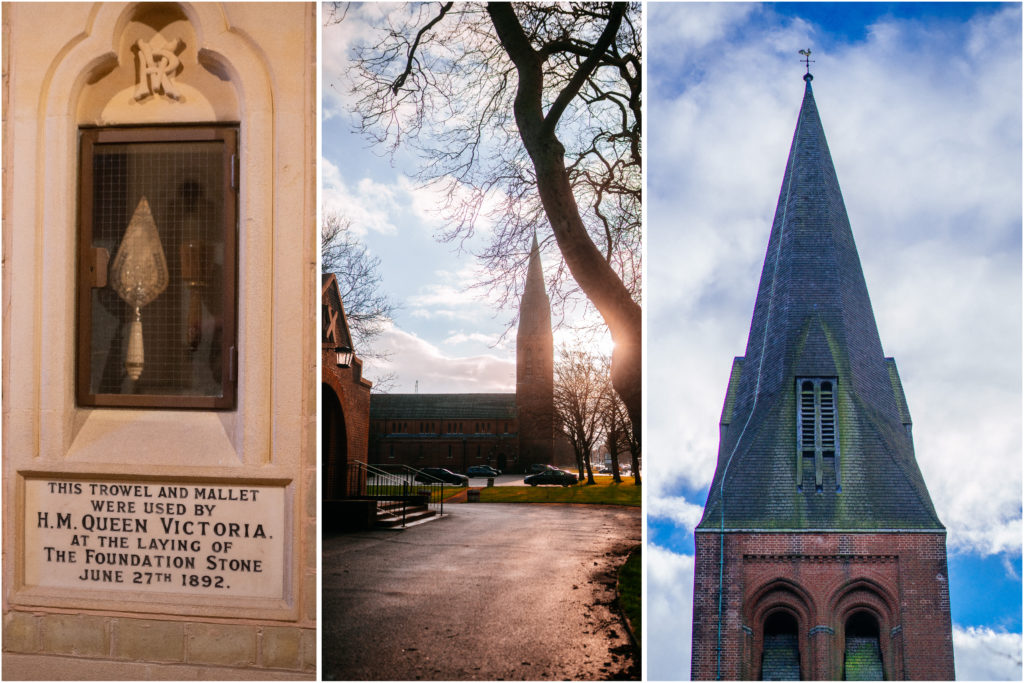
I continued walking a hundred meters or so and then approached the Basingstoke Canal, a waterway system that stretches 32 miles. It was built in the late 1700’s to connect London with the agriculture of Hampshire but never really succeeded. In this area it was used primarily during the construction of the military town to haul timber, although near the 350 old Wharf Bridge, there was apparently a very popular inn that was so enticing for soldiers that the military tore down shingle by shingle.
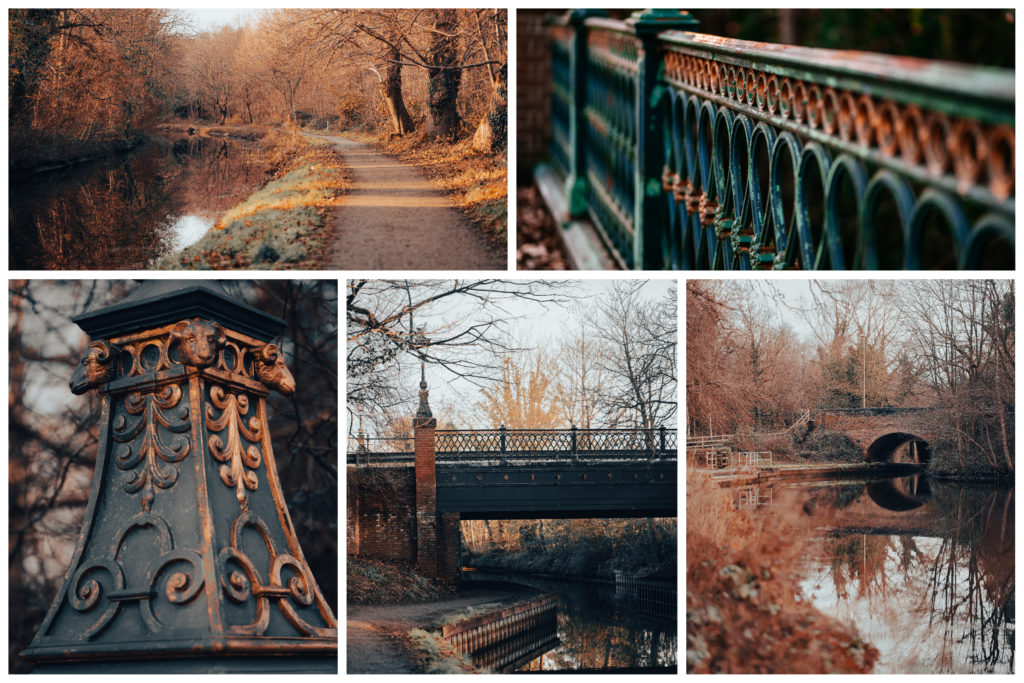
I love running along the canal and it’s not unusual to see members of the military running their drills on the canal towpath. It’s usually a very quiet place to walk or run, the canal is home to swans, ducks, herons and lots of other feathered friends. Dotted along the canal are reminders of the war, Pillboxes where soldiers would guard important routes from invasion. Most are bricked up now but still an interesting sight! I walked along the canal until I came to Claycart Bridge.
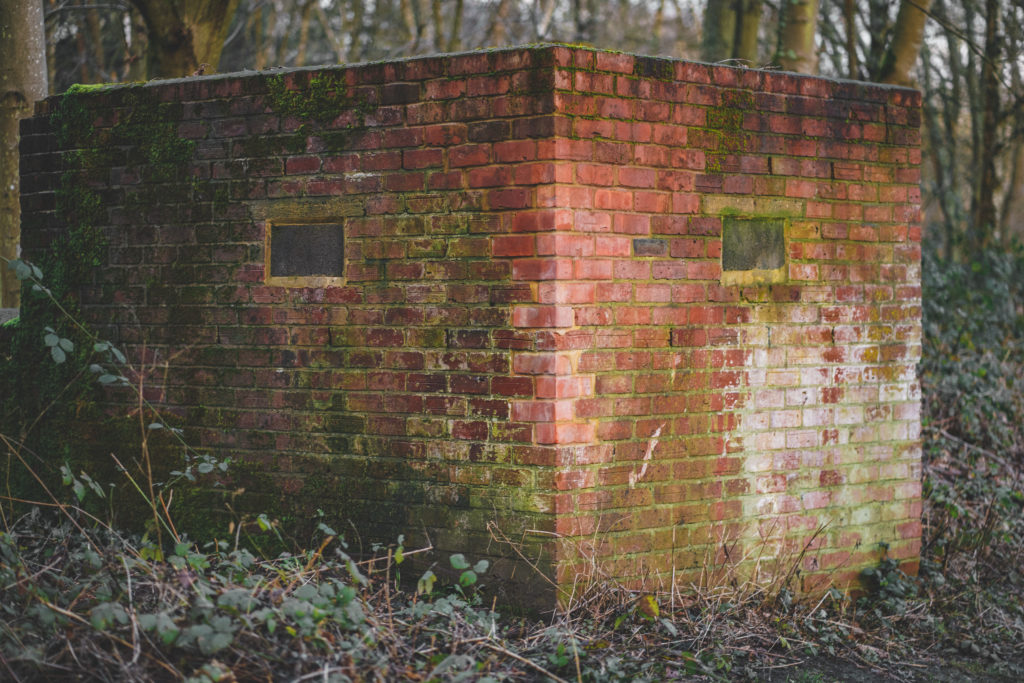
The bridge was built in the first World War, replacing a drawbridge and while it isn’t used anymore, I always feel like it’s an eerie spot (fitting that it was used in an episode of Doctor Who!).
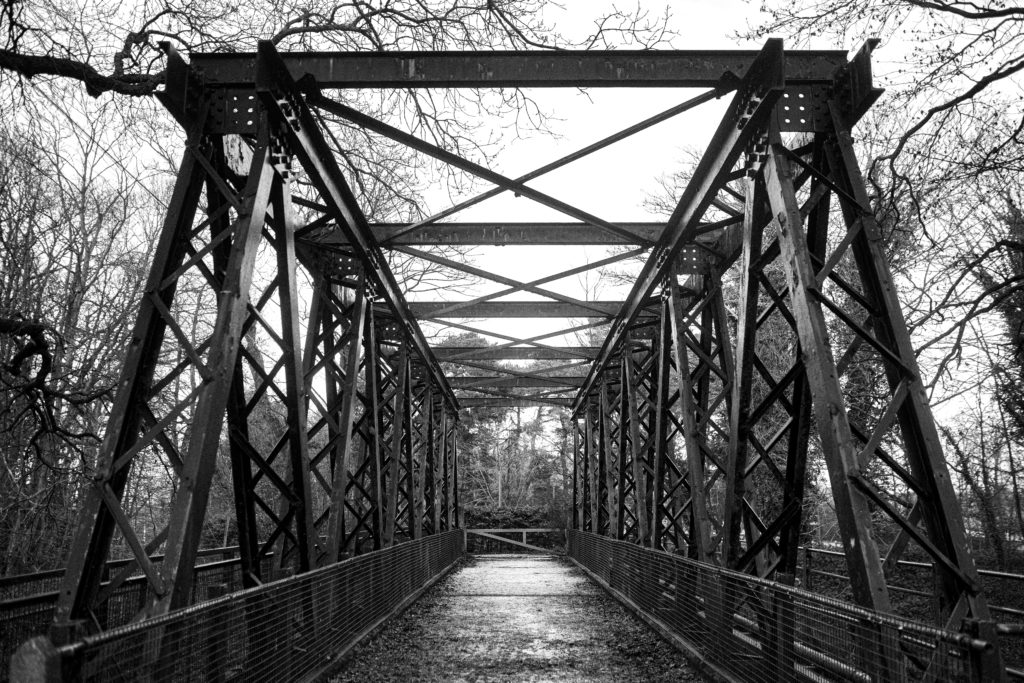
After leaving the canal, I walked through more of the military training grounds, on a disused road that winds through wooded areas and spits you out next to usually very loud race track. A few steps beyond the racetrack, I was back in the woods, and approaching two random walls deep in the trees.
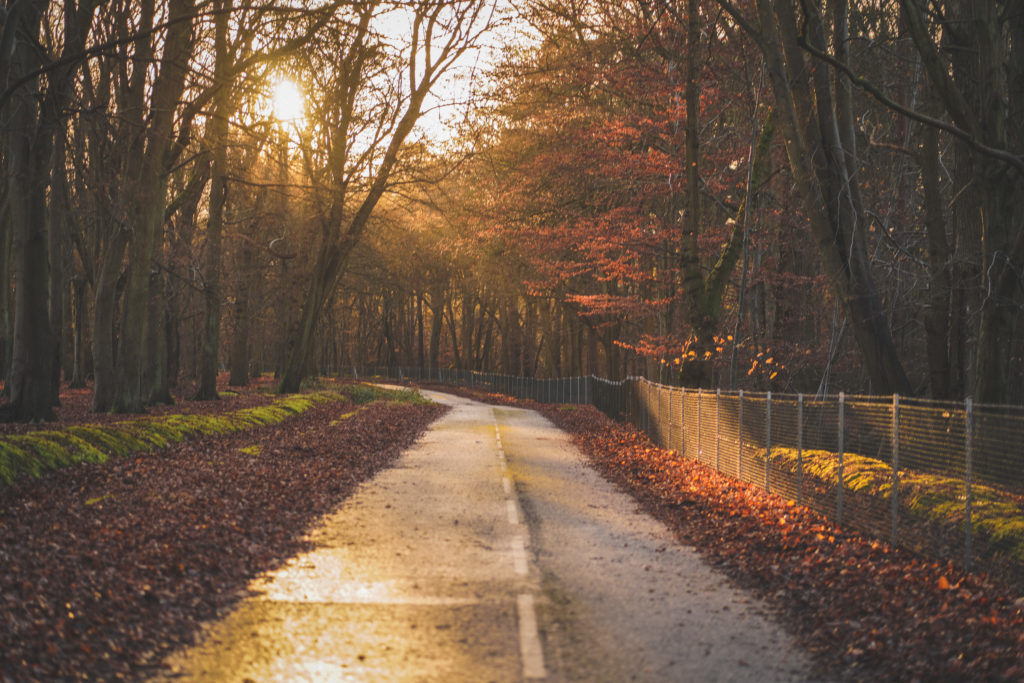
These walls are actually WW1 firing walls, used for machine gun practice. It can sometimes feel a bit surreal to see kids playing in front of them, and people peacefully walking their dogs in a space that once saw machine guns firing hundreds of bullets. You can still see the bullet holes left in the metal facing.
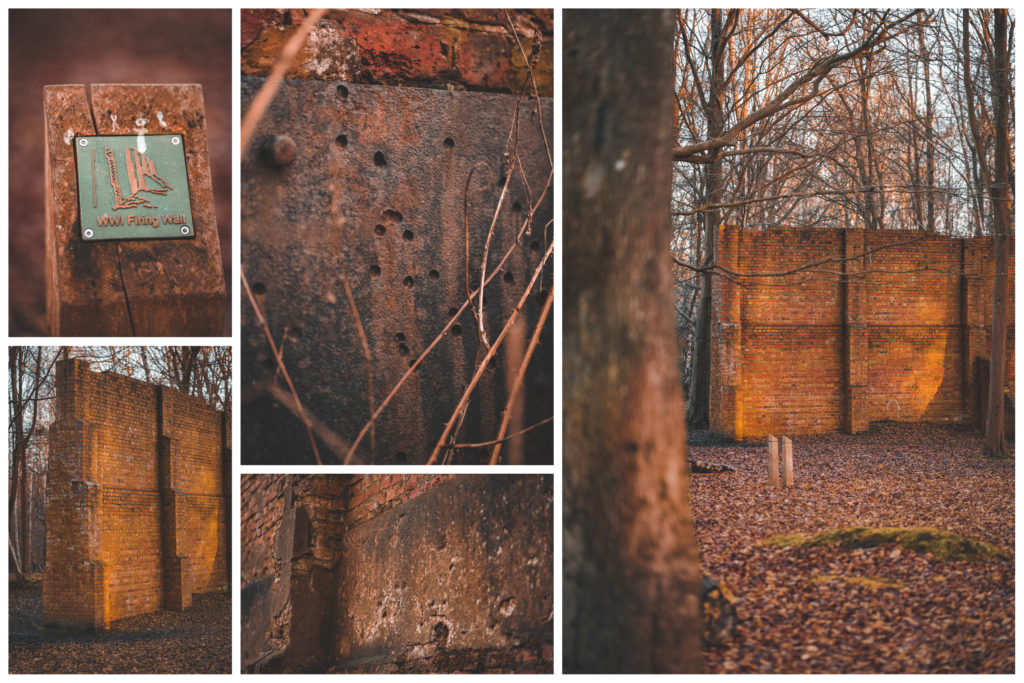
Just beyond this stretch of woods stands one of Aldershot’s landmarks, the Wellington Statue. It was made in the 1840’s to honour the legacy of former Prime Minister and victor of the Battle of Waterloo, the Duke of Wellington. It was at one point the largest horse statue in Britain and lived atop Wellington Arch in Hyde Park near Buckingham Palace. Apparently Queen Victoria was not a fan of the statue, as she said it disrupted the view, and so after the Duke passed away, the statue was moved to Aldershot, home of the British Military.
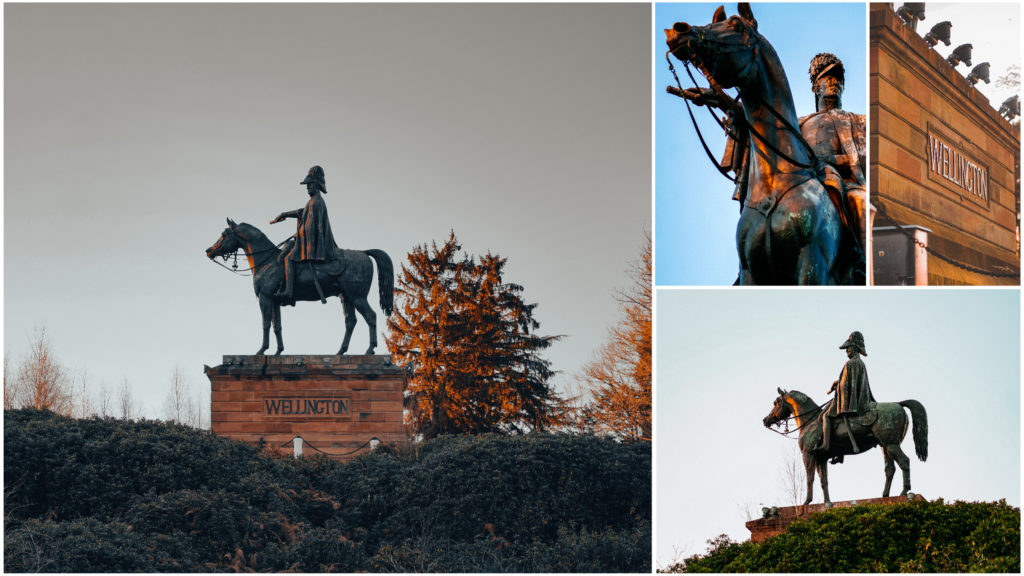
Next to the statue is the All Saints Garrison Church which was built in 1863, it’s a really beautiful red bricked church with a tree lined avenue leading up to it.
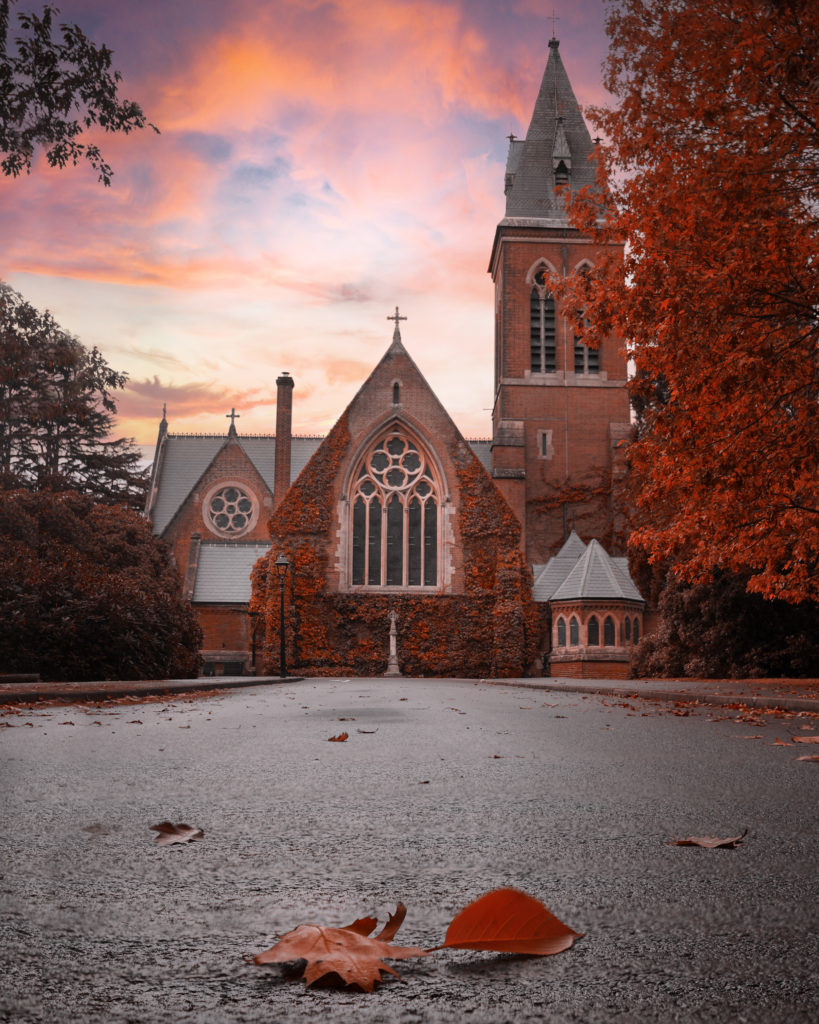
Outside of the church is a wooden cross called the Somme Cross. Wikipedia says “The 1st Division went into action at High Wood in September 1916 and over the next few days saw some of the bloodiest hand-to-hand fighting during the Battle of the Somme which left the trenches thick with British and German dead. After the battle the 1st Division engineers put up a memorial cross at High Wood using wood taken from the ruins of Bazentin village. As after the War there was a permanent stone memorial to the 1st Division at Le Cateau the cross at High Wood had to be removed or left to decay; instead, it was brought back to the UK.”
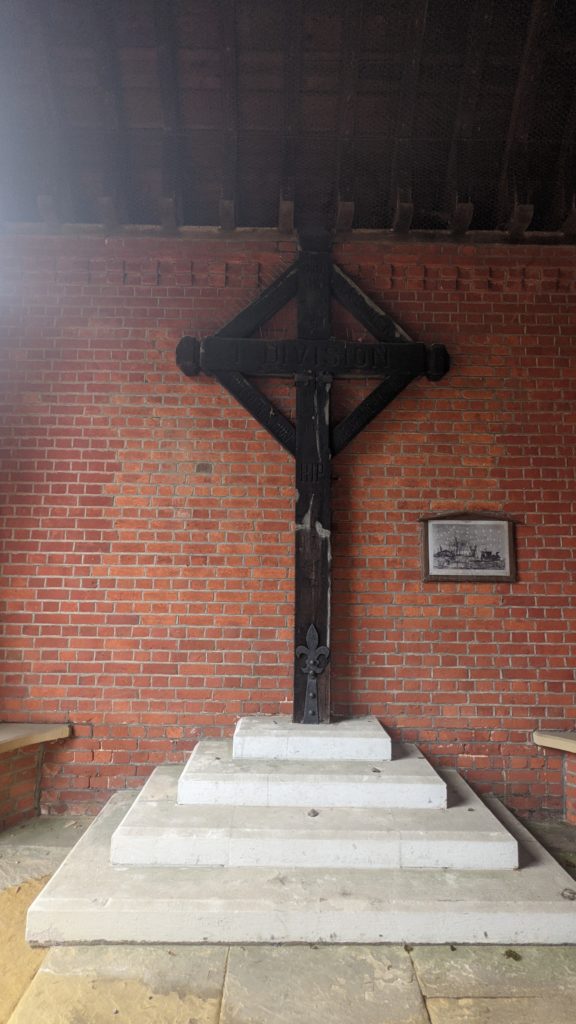
Now I was almost finished my walk, and skirted back towards the house, passing one last interesting building just a few steps away from our front door. The former Beaumont Riding School, which was used by the military as Cavalry training. Winston Churchill trained as a cavalry officer in this building.
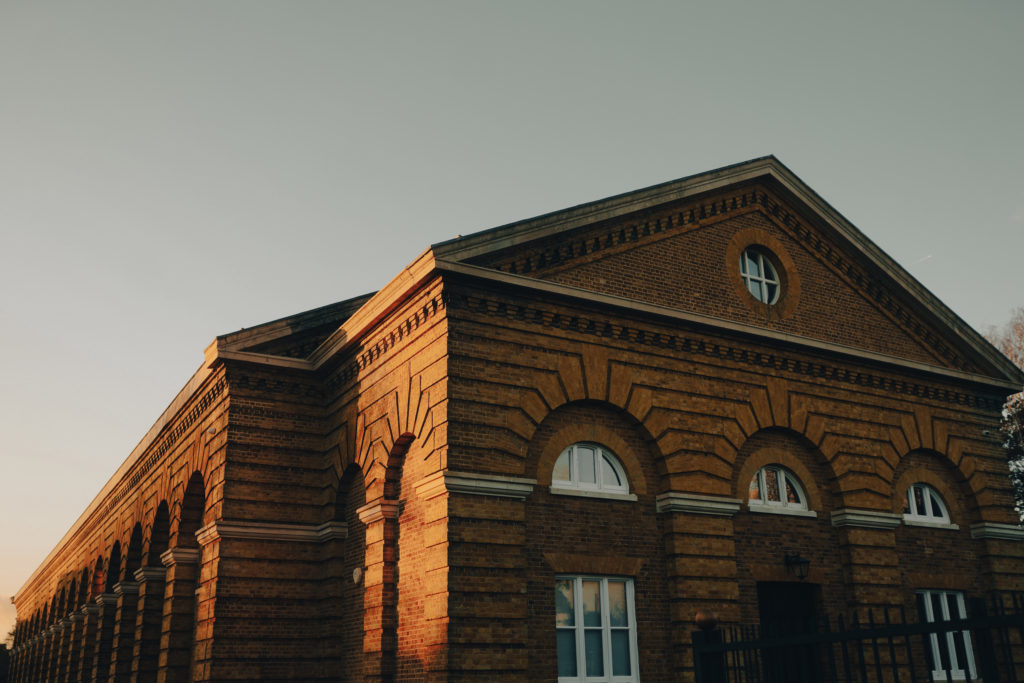
I was suprised to see that my walk was almost 10k, my slight detours had added on a few extra km from my usual running route but it was nice to stop and acknowledge all the sights I normally see as I’m trying to run as fast as I can.
